The biggest NBA Draft decisions which will impact next year's college hoops season

Photo by Chet White | UK Athletics
Let’s be honest: June is kind of a weird month if you’re a sports fan.
Some fans are locked in on the NBA playoffs. Others are enjoying a little college baseball. Some are already looking ahead to college football. And for college hoops diehards, well, you’re kind of stuck in no man’s land. The season has been done for months. Transfer portal season (which is now an entity all to itself) also wrapped up a few weeks ago. So what’s a guy or gal to do if you need a non-NBA basketball fix?
Well, believe or not, what some have yet to realize is that over the next couple weeks, NBA Draft season is really set to pick up steam. Yesterday, NBA Draft Combine invites officially went out. This weekend we have an event called the “G-League Showcase” (designed for fringe draft picks who aren’t locks for the first round) and next week is the actual NBA Draft Combine itself in Chicago. The draft lottery is, believe it or not, next Tuesday.
So within the next few weeks we’ll get a ton of clarification on the 2021 NBA Draft, with July 7th serving as the final day that players can withdraw and still play college hoops next year.
With about three weeks to go until that date, let’s go ahead and look at the biggest remaining “Stay or Go” Draft decisions which could impact college hoops next year.
Davion Mintz (Kentucky)
You know it’s a weird year – or at least it was a weird college hoops season last year – when Duke and Kentucky have a combined one player on the fence about declaring for the draft. And while that one player – Davion Mintz – is important, it won’t necessarily be earth shattering for the Wildcats if he decides to pursue pro options. Clearly John Calipari would love to have Mintz back next season. But it won’t be a wild scramble to replace him if he decides to stay in.
As a matter of fact, if there is any way to fully contextualize just how off the rails Kentucky’s season went last year, it might be by looking at how Mintz’s role evolved throughout the entire campaign. Recruited to be a plug-and-play guy who could contribute on and off the ball, Mintz basically ended up as the only consistent player game-to-game on the Wildcat roster. He finished the season tied for the team lead in scoring at 11.5 points per game while shooting nearly 38 percent from three.
Looking ahead to Mintz’s decision, it’s actually one of the more simple ones on this list.
To be blunt, he almost certainly isn’t going to get drafted, and with the reinforcements John Calipari has brought in this summer, it’s hard to envision his role getting any bigger or his draft stock getting better a year from now. So as a soon-to-be 23-year-old he has to ask himself a simple question: Does he declare when his stock is probably as high as it will get and simply start earning professional money? Or come back, and get the “full Kentucky experience” next year, which will definitely include full crowds at Rupp Arena and hopefully a legitimate run at an SEC title and Final Four.
There is no “wrong” answer for Mintz, and the fact that “name, image, likeness” is coming in could help one of the most recognizable players on this roster coming into next year earn a few bucks off the court as well. Oh and the Wildcats will gladly take a solid locker room guy who has proven he can get it done in the SEC too.
Again, there is no easy answer here. But Mintz will be one of the most fascinating players to follow these next few weeks.
Johnny Juzang, Chris Smith, Cody Riley (UCLA)
For all the negative PR that college basketball gets, Johnny Juzang is the best proof in a long time of the value that the sport provides. A week before the NCAA Tournament, only diehard college hoops heads, UCLA fans and Kentucky fans (where Juzang previously played) had any idea who he was. Then he dropped 28 on Michigan in the Elite Eight and 26 on Gonzaga in the Final Four and is now about as much of a “household name” as college hoops has. And he has seen himself skyrocket of draft boards because of it.
Therefore, while Mintz has a pretty easy decision, Juzang has one of the toughest on the board. He’s far from a first round guarantee. But it’s fair to wonder if his stock will ever be higher.
As for Smith and Riley, well their decisions are completely different. Smith was actually the Bruins’ leading scorer and best NBA Draft prospect entering last season, before a knee injury abruptly cut his year short. It’s also what allowed Juzang to emerge, which leads to a fascinating push-pull on Smith’s behalf. Does he enter the NBA Draft, if he isn’t fully 100 percent and can’t put his best foot forward? On the flip side, will he actually have a diminished role next year if Juzang returns for another season of college ball?
(Riley on the other hand, is an undersized four who seems to be testing more to get in front of NBA teams than anything else. And even if he departs, the Bruins have Rutgers transfer Myles Johnson to step in for him in the front court)
So really, the Bruins have arguably the most interesting chess pieces on the board going into the next couple weeks. To me, if Juzang returns UCLA is the consensus best team in the country next year. If Juzang leaves but Smith comes back, I still think they’re somewhere in the Top 10-15.
But if they both leave? That’s where it gets much more interesting.
Ochai Agbaji, Jalen Wilson and Remy Martin (Kansas)
So here’s what you need to know about Kansas: For as “disappointing” as the Jayhawks’ season seemed at times last year, and despite the fact that they got destroyed by USC in the NCAA Tournament (just your average, ho-hum 34 point blowout) they actually weren’t terrible by the end of the regular season. The Jayhawks finished second in the Big 12 regular season, finishing behind only eventual champion Baylor. Kansas was also one of only two teams to beat Scott Drew’s club all season.
Point being, Kansas is probably better than you remember in 2020-2021, and on paper, they’re set to return everyone of substance from that team outside of guard Marcus Garrett. And they’ve since replaced Garrett with former two-time All-Pac 12 guard Remy Martin.
So yeah, that team should be good. Assuming everyone shows up on campus.
Leading scorer Ochai Agbaji (14.1 ppg), third leading scorer Jalen Wilson (11.8 ppg) and Martin are all testing the waters, but the good news – at least if you’re Self – is that none of them are projected to go particularly high, if get drafted at all. Agbagi probably has the best stock of them all, and even he’s a fringe second round pick at best.
This is all a long-winded way of me saying that, if all three come back, Kansas will again be loaded. And again in position to win another Big 12 title.
Armando Bacot (North Carolina)
This is another one that is pretty straightforward. While North Carolina did lose Day’Ron Sharpe to the pros and Garrison Brooks and Walker Kessler to transfer, Hubert Davis should still be in pretty good position entering his first year head coach. Guards Caleb Love, RJ Davis and Leaky Black are all back, and Brady Manek (a double-figure scorer at Oklahoma last season) is in as a stretch four.
Hubert Davis tells me that he wants to play with "versatile big men" at North Carolina, which is why he recruited Brady Manek (Oklahoma) and Justin McKoy (Virginia).
Also added that Armando Bacot "will be back" next year. Bacot is currently going through the NBA Draft process.
— Jon Rothstein (@JonRothstein) May 3, 2021
Now, all Davis needs is a final decision from Bacot, a true back to the basket forward who led the team in both scoring (12.3 ppg) and rebounding (7.8 rpg) last season as well.
Considering that Bacot isn’t on any mock draft boards that I’ve seen, and considering that Davis has gone so far as to publicly say that he anticipates having Bacot back, this again feels pretty cut and dried.
The Tar Heels should start in the Top 25 if he’s back.
EJ Liddell and Duane Washington (Ohio State)
The Big Ten took a lot of crap in the NCAA Tournament, when everyone other than Michigan got bounced on the opening weekend. And no team signified the Big Ten’s shortcomings like Ohio State. A team which spent most of the regular season in the Top 10 lost to No. 15 seed Oral Roberts in the first round of the NCAA Tournament.
Michigan, pulling the rest of the Big Ten into the Sweet 16 pic.twitter.com/05seHAiTqm
— Aaron Torres (@Aaron_Torres) March 23, 2021
Still, the fact remains that umm, Ohio State was in fact in the Top 10 most of the season. And they will start there if their two leading scorers, Washington (16.4 ppg) and Liddell (16.2 ppg, 6.7 rpg) both come back.
Considering that Washington is a talented but not-particularly-athletic combo guard and Liddell is a 6’8 back-to-the basket center, neither is projected to be drafted, so right now it feels like both will likely return.
And that might be Ohio State’s greatest gift: Neither of these guys have seemingly can’t miss NBA potential, but both are really good college players.
And Ohio State will again be really good if both return to school.
Jaden Shackleford and Josh Primo (Alabama)
The Crimson Tide took the SEC by storm last season, and for all the talk about the massive role that both Herb Jones and John Petty played, it was actually Shackleford who was the leading scorer on the Crimson Tide’s roster. Primo, who reclassified late last summer, averaged 8.1 points per game on 38 percent shooting from beyond the three-point line as a true freshman. Not bad for a player who arrived on campus at 17-years-old and didn’t even turn 18 until December of 2020.
Ironically (or maybe not) that’s also why, despite the respectable but not overwhelming numbers, many actually deem Primo to be the higher-end draft prospect. As someone who won’t turn 19 until December 24th, 2021 he is the youngest player in the draft, and with his size, skill and age, some mocks have him as a fringe first round pick. Meaning that of the two, it definitely feels like Primo is more likely gone.
Thankfully, Nate Oats has arguably the deepest backcourt in America with the return of second-leading scorer Jahvon Quinerly, former McDonald’s All-American/Texas Tech transfer Nimari Burnett and 2021 McDonald’s All-American JD Davison.
With Shackleford’s return, Alabama will still be good enough to win another SEC title.
If they get both back? They should be considered the favorite (at least in this writer’s opinion) in the SEC.
Eric Ayala, Aaron Wiggins and Darryl Morsell (Maryland)
Coming off a second round NCAA Tournament bid, the Terps are another team whose entire 2021-2022 off-season projection hinges almost entirely on what happens in the NBA Draft process. And an interesting twist, all three Maryland players currently testing the waters have completely different circumstances.
Ayala was probably Maryland’s best player overall last year, averaging 15.1 ppg and 4.3 rebounds – but also probably has the worst draft projection as any of the three. Mark Turgeon even admitted this week that Ayala is basically going through the process for the experience of working out for NBA teams, more than with a real expectation that he is staying in. Morsell, on the other hand is the polar opposite. As a senior who graduated in the spring, he has an extra year of eligibility and is completely open on what to do with it. Morsell is of course testing the waters, but has also entered the transfer portal to see what his other college options are. He hasn’t yet ruled out the idea of just coming back to Maryland either though.
Finally, there is Wiggins, who actually has the best NBA Draft ceiling of all three. A 6’6 combo who averaged 14.5 points and 36 percent from three last year, he has just about everything the NBA is looking for in a modern wing. Still, as a fringe second round pick, he too has quite a decision to make.
At this point it feels like the assumption is that Ayala will almost certainly be back and Morsell will almost certainly be gone.
If Wiggins returns along with Ayala, you’re looking at a team that will start next season in the Top 15.
Marcus Sasser (Houston)
Kelvin Sampson might just be one of the five best coaches in college hoops. And Marcus Sasser might be the biggest testament to that yet. A player who wasn’t ranked among the Top 350 players coming out of high school – TOP 350!!! – he was the Cougars’ second leading scorer this past season, dropping 20 points against Baylor in the Final Four.
With minimal draft interest my hunch he will return for another year, and assuming he does, Houston should start the season ranked in the Top 15.
And even if he doesn’t come back, are you really betting against Kelvin Sampson?
Miles McBride and Sean McNeil (West Virginia)
West Virginia was a fascinating team last season, going from a squad which relied on bully ball early with Oscar Tshiebwe and Derek Culver, to being perimeter based once Tshiebwe elected to transfer. At that time both McBride and McNeil both blew up, with McBride turning into an All-Big 12 guy, averaging 15.1 points per game on 41 percent three-point shooting.
At this point it feels like McNeil has no NBA draft prospects to speak of, so logic would suggest he’ll be back. But McBride is much more of an interesting case, as a player that has real, first round potential. Outside of maybe Juzang, McBride has the single toughest decision on this list.
It also might be the one that swings his team’s fortunes more than anyone else. With McBride back (and assuming McNeil follows) the Mountaineers are probably a Top 20 team coming into next year.
Without him, they might not even make the NCAA Tournament.
Isaiah Mobley (USC)
While all of the focus was understandably on Mobley’s younger brother Evan during USC’s run to the Elite Eight, what got totally lost in the shuffle was how good older brother Isaiah Mobley was. And it shouldn’t have come as a surprise. The elder Mobley (like his baby bro) is a former California State Player of the Year and McDonald’s All-American.
Yet after an injury-plagued freshman season, and an early sophomore season stuck in his brother’s shadow, Isaiah shined late. Over the course of the Trojans’ NCAA Tournament run Isaiah Mobley averaged 16 points per game, including a 19-point, 13 rebound effort against Gonzaga in the Elite Eight. He was essentially the only Trojan who showed up that night.
Which also leads to a fascinating decision coming for Isaiah. With Evan Mobley headed to the pros, you can look at things from two perspectives. Some might say he should come back, where the spotlight will be on him and the Trojans will once again be in the mix to finish in the top 3-4 of the Pac-12. On the flip side it’s also hard to imagine USC making a deeper run than the Elite Eight next season, nor will he have more help with Evan gone. An argument could be made that he should ride his hot stock into the NBA Draft right now.
Still, it appears as though no final decision has been made. And assuming Mobley does come back, the Trojans again, should be in the mix with UCLA and Oregon atop the Pac-12.
Hunter Dickinson (Michigan)
The final player on this list, is arguably the most interesting. It’s Hunter Dickinson, who served as the low post anchor of the Wolverines Elite Eight run this season. During Michigan’s run he led the team in both scoring (14.1 ppg) and rebounding (7.4 rpg) and was one of the best freshmen anywhere in college hoops next year.
I’ll be blunt, at this point, it doesn’t appear as though Dickinson will stay in the draft. He waited all the way up to the deadline to even declare, and wasn’t invited to next week’s combine, a pretty solid sign that he probably won’t get drafted.
So he will probably be back.
What is interesting though is this: Michigan is seen as one of the leaders for Jalen Duren, the high school star of 2022, who we just learned this week may reclassify to 2021.
I bring that up to say, would Dickinson’s decision make it more or less likely that Duren decides to come to college next year? Probably not, but it’s worth considering.
Like so many guys on this list, Dickinson’s decision will be fascinating watch unfold.
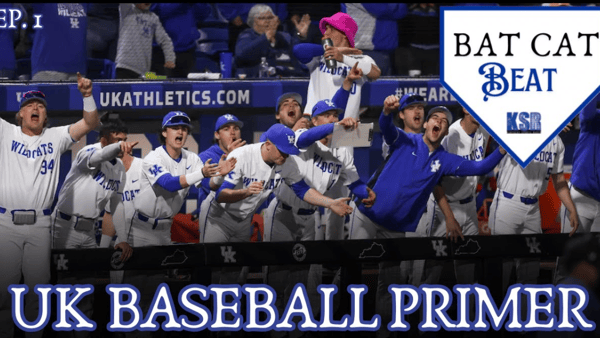
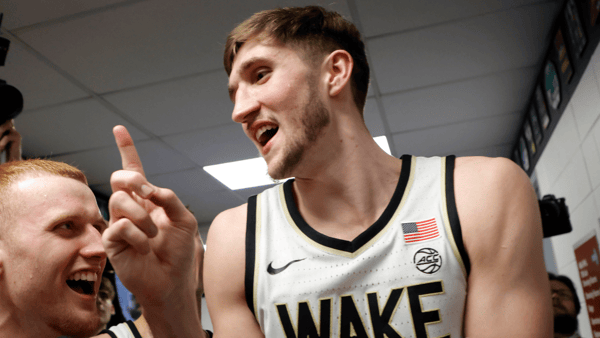
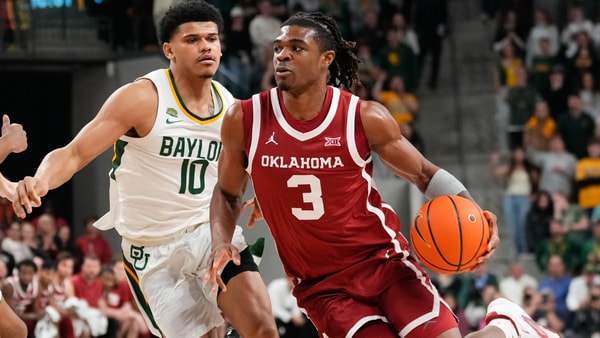
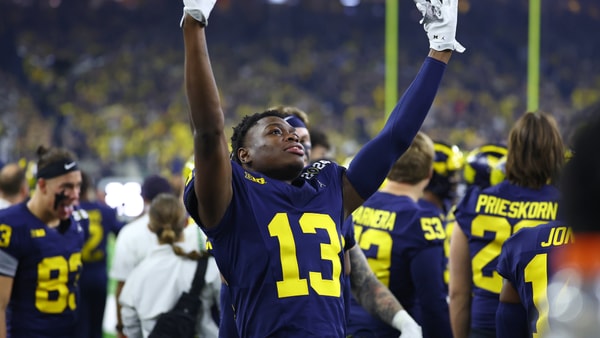
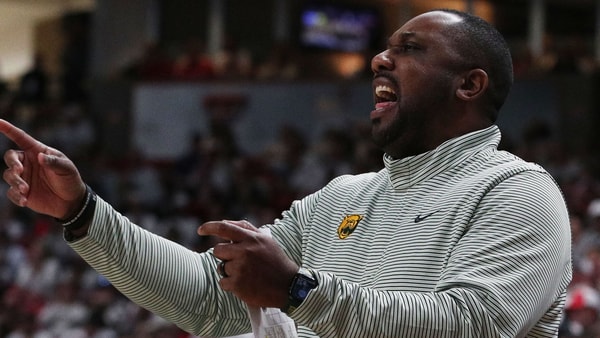
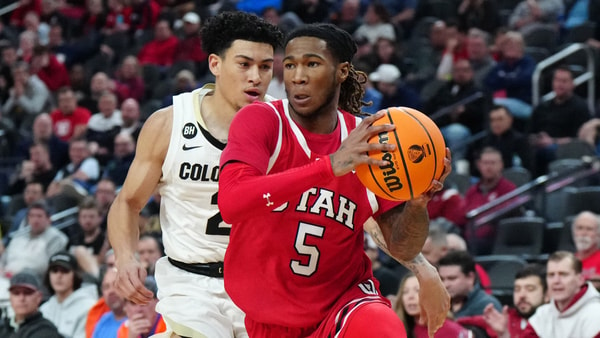
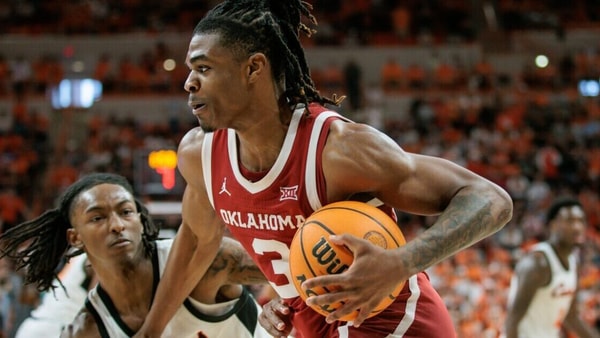
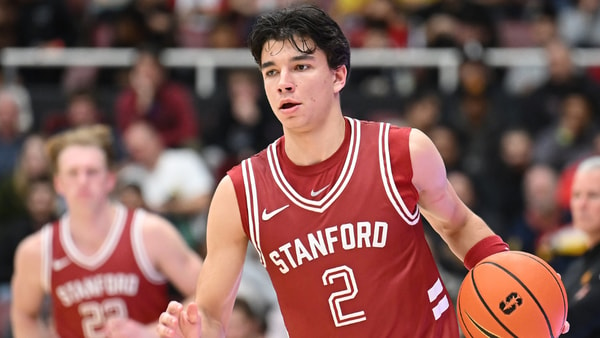
Discuss This Article
Comments have moved.
Join the conversation and talk about this article and all things Kentucky Sports in the new KSR Message Board.
KSBoard